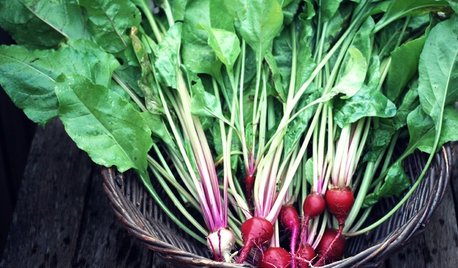Heirloom Pole Bean Question
scarlettfourseasonsrv
13 years ago
Related Stories

SUMMER FRUITS AND VEGETABLESSummer Crops: How to Grow Beans
Grow your own beans for amazing variety and healthy, convenient produce all summer
Full Story
GARDENING GUIDES10 Easy Edibles for First-Time Gardeners
Focus on these beginner-friendly vegetables, herbs, beans and salad greens to start a home farm with little fuss
Full Story
HOUZZ TOURSMy Houzz: On Top of the Worldly in Florida
Global and vintage finds plus family heirlooms bring boho flair to a midcentury St. Petersburg home
Full Story
EDIBLE GARDENSSummer Crops: How to Grow Tomatoes
Plant tomato seedlings in spring for one of the best tastes of summer, fresh from your backyard
Full Story
OUTBUILDINGS12 Fun Backyard Forts Grown-Ups Can Love, Too
Kids might use them for secret meetings, but the word is out on these tree houses and playhouses that consider adult design tastes
Full Story
SUMMER FRUITS AND VEGETABLESHow to Grow Your Own Fresh, Sweet Corn
Here's how to plant and care for your own mini cornfield
Full Story
EDIBLE GARDENS8 Last-Minute Additions to a Summer Edible Garden
It’s not too late to get these vegetables and herbs planted for a bountiful harvest this year
Full Story
EDIBLE GARDENSGarden BFFs? Why Your Vegetables Are Begging for Companion Plants
Foster friendships among plants for protection from pests, pollination support and color camaraderie
Full Story
EDIBLE GARDENSHow to Grow Your Own Sweet Summer Crops
This guide will help any gardener get started on growing the freshest warm-season veggies and berries for summer
Full Story
LANDSCAPE DESIGNGreat Design Plant: Retreat to the Shade of Hardy Catalpa
Big foliage and a towering height provide a shady respite in summer, but that's not all hardy catalpa offers dedicated gardeners
Full Story



Okiedawn OK Zone 7
scarlettfourseasonsrvOriginal Author
Related Discussions
HAVE: Have heirloom tomato seeds for Pole Beans
Q
HAVE: Have heirloom tomato seeds for Pole Beans
Q
Heirloom Pole Bean Recommendations
Q
Heirloom Pole Beans
Q
soonergrandmom
Okiedawn OK Zone 7
scarlettfourseasonsrvOriginal Author
Macmex
elkwc
scarlettfourseasonsrvOriginal Author
scarlettfourseasonsrvOriginal Author
Okiedawn OK Zone 7
carsons_mimi
Macmex
elkwc
scarlettfourseasonsrvOriginal Author